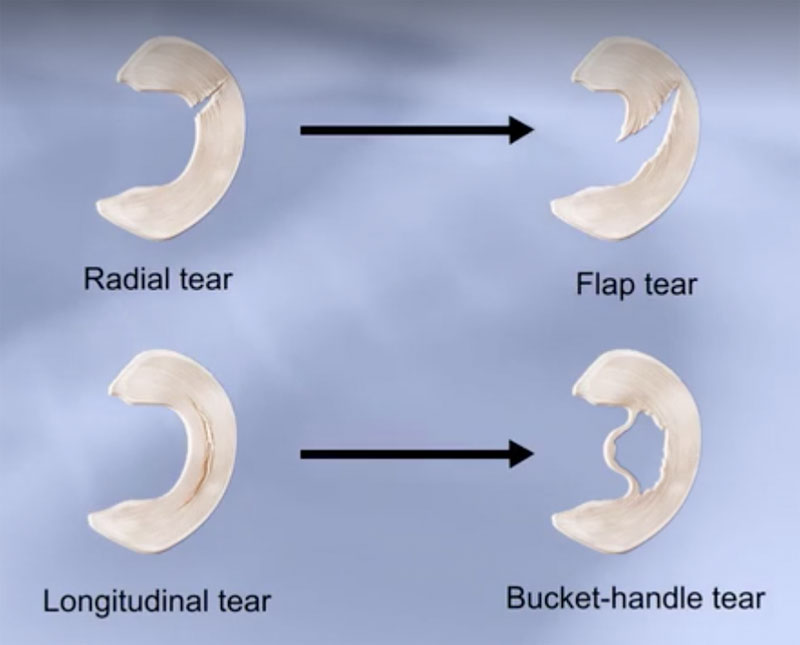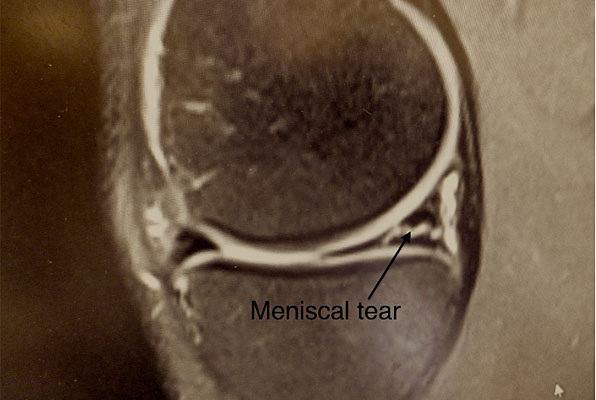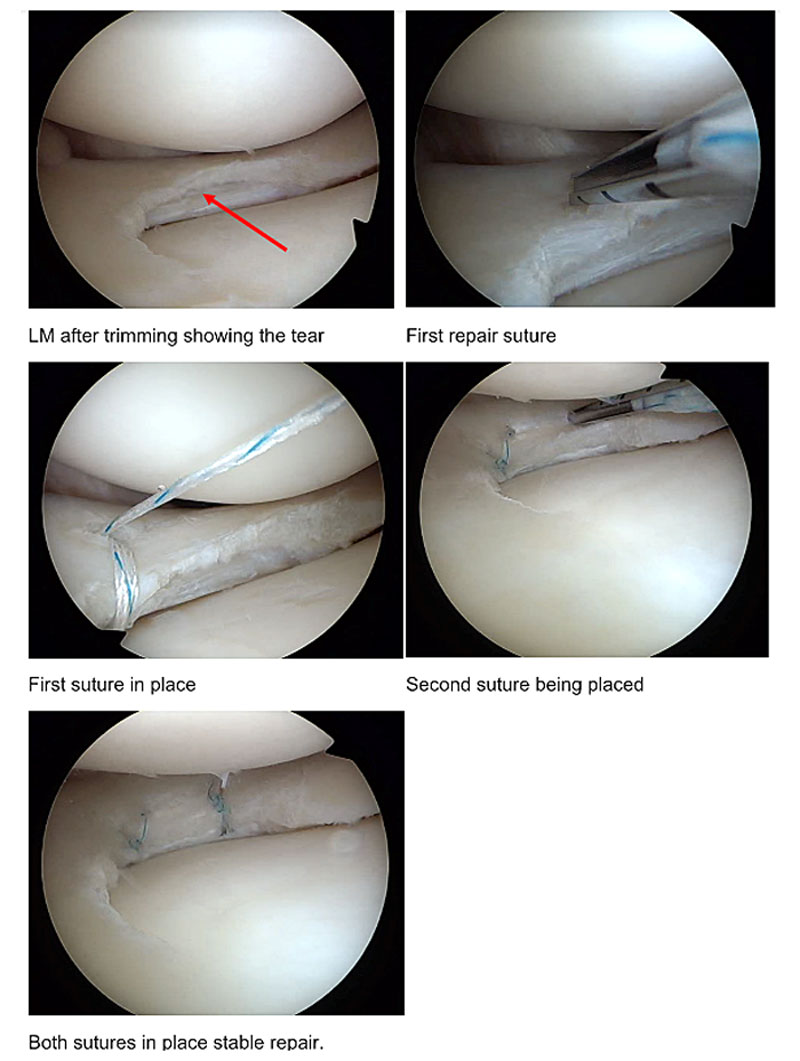Knee - Meniscus Tears (Torn Cartilage)
Knee Sports Injury - Knee Meniscus Tears
What is a meniscal tear?
The meniscus is a fibrocartilaginous structure which sits between the two sides of the knee joint, it is securely fixed at the tibia at the same time it glides and changes shape as the knee goes through its range of movement. It looks like a crescent when viewed from the top and in cross section are wedge shaped, being very thin at the inner edge and thicker at the periphery where it attaches to the joint capsule and gets its blood and nerve supply.
It has a number of functions. The main functions being to share loading, give stability to the knee joint, give feedback to the brain regarding position and movement of the knee (proprioception), and provide nutrition to the joint surface (Articular cartilage).
Injury to the meniscus can occur from various activities ranging from relatively innocuous twisting, squatting or sometimes no specific incident or injury can be identified. It is commonly caused by an acute event such a fall or injury playing sport. It can be associated with injury to other structures in the knee joint.
Types of meniscal tears

How you prevent a Meniscus Tear?
Meniscus tears are difficult to prevent since they're usually the result of an injury. But some precautions might lower the risks of a knee injury.
You should:
• Keep your thigh muscles strong with regular exercises.
• Warm up with light activities before taking part
• Give your body time to rest between workouts.
• Fatigued muscles can increase your risk of injury.
• Make sure your shoes have enough support and fit correctly.
• Maintain flexibility.
• Never abruptly increase the intensity of your exercise routine
What are the symptoms?
The symptoms can be acute after injury during sport, usually a twisting action on the knee followed by immediate pain (traumatic tear) and sometimes swelling.
The symptoms can be of gradual onset becoming worse with time and improving with conservative measures (degenerative tears).
The knee may click, catch, lock (not able to straighten the leg) and give way especially on quick change of direction. The knee may swell and give night pain with morning stiffness. Pain is most commonly located on the inside of the knee joint (medial meniscus tears), but can be in other parts of the knee.
What investigations are needed?
X rays to see if there is any arthritis (wear and tear) or bony injury.
MRI scan which looks at the soft tissues, meniscus and ligaments.
How can it be managed?
This injury is initially treated with conservative/non-operative measures, which include rest, elevation, ice, using knee supports, anti inflammatory medication and physiotherapy.
In cases where the meniscus has torn and is trapped in the joint giving "a locked knee", in this situation the knee will not straighten fully. This is most often in the bucket handle type of tear of the meniscus (BHT). This will require urgent assessment and surgery.
If all conservative treatment fails with on-going symptoms and disability then surgery may be required. Mr Aslam Mohammed will discuss the details of this with you.
What does the surgery involve?
The surgery usually requires a keyhole procedure (see Knee Arthroscopy).
Before you make your decision to have surgery Mr Aslam Mohammed will explain the actual surgery and procedure required. He will also discuss the details and go over the potential risks and benefits of the operation. It may be possible to repair the meniscus and this is the best option for acute tears in young adults to help maintain a healthy joint. This reduces the risks of developing osteoarthritis in the future. If the meniscus is degenerate and too badly damaged to repair then it will be trimmed to stop it catching in the knee joint and causing further damage and also improve your symptoms.
What happens after surgery?
What are the risks?
Example Case Meniscal Tear

 Torn medial meniscus trimmed and repaired with all inside with keyhole surgery.
Torn medial meniscus trimmed and repaired with all inside with keyhole surgery.
Case Study LM Tear
Case LM tear
19yrs old male footballer, twisting injury to right knee, sustained a horizontal tear of the lateral menicus (LM) Presented to Mr. Aslam Mohammed with pain and not being able to play football.

Patient rehabilitation, sports specific training. Back playing at 4 months from time of repair.
Arthroscopy video
of LM repair
- Arthritis
- Knee Arthritis
- Knee Replacement
- Knee Sports Injury
- Knee Arthroscopy
- Knee Meniscus Tears
- Anterior Cruciate Ligament
- Chondral Injury / Cartilage Injury
North West Hip & Knee Clinics
Services provided:
• Keyhole (minimally invasive)
• Hip and Knee Surgery
• Hip and Knee Joint Replacement
• Hip and Knee Sports Injury
• Hip Arthroscopy, FAI and Labral Surgery
• Knee Arthroscopy - Meniscus surgery
• Knee Arthroscopy and ACL / PCL
• Ligament Reconstruction
• Biologics – PRP, Stem Cell
• Cartilage Regeneration
Mr Aslam Mohammed Consultant Hip and Knee Surgeon